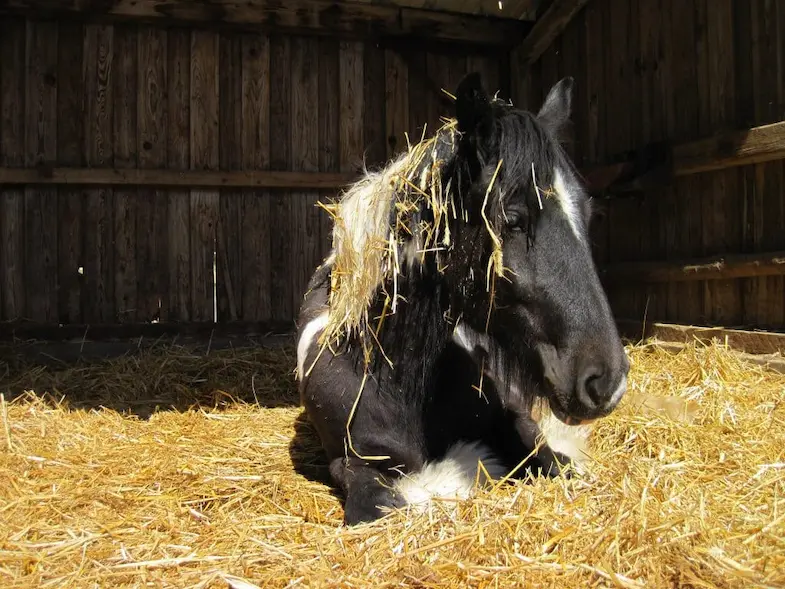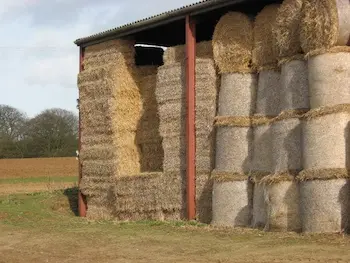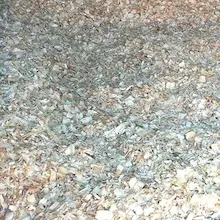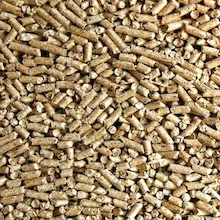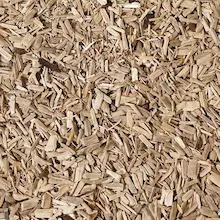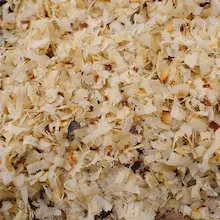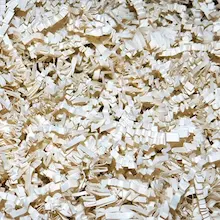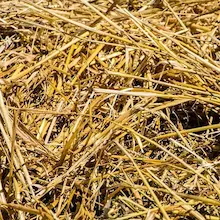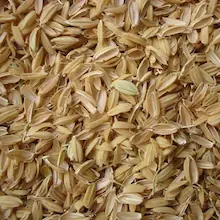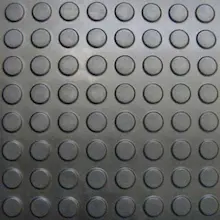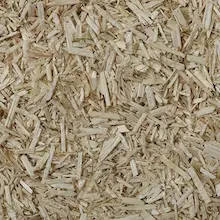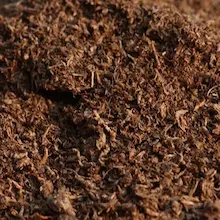If you’re going to stable your horse overnight then you’ll need to think about what type of bedding you’ll be using. In the past, the only two options were straw or wood chips but we’ve come a very long way since then. There’s a wide range of choices now so which one is the best?
What do you want from your bedding?
Each type of bedding has its advantages and disadvantages that need to be taken into consideration when you choose which type to go for. If your horse has an allergy or respiratory problem then how dusty the bedding it will be your main concern but if your horse is an older horse then the comfort of the bedding becomes more of a priority.
With that in mind, what should you be thinking about when it comes to choosing the right bedding for your horse?
Is it going to be comfortable?
Keep in mind that your horse may be spending quite a bit of time in his stable or stall so making sure the bedding is comfortable is important. Also, make sure that once your horse has urinated on the bedding it still gives enough cushioning to keep it comfortable.
How dusty is the horse bedding?
While nobody wants dusty bedding this is much more of an issue with horses who suffer from any sort of respiratory condition. A 2014 study found that if you use straw bedding then both you and your horse are exposed to around 17 times more dust than if you used wood shavings for bedding. While this sounds like a lot its not really an issue if neither of you has a respiratory issue. If dust is an issue for you then kiln-dried wood shavings are almost 100% dust-free.
Can I easily can I store it?
It’s one thing to buy bedding but you also need to consider where and how you’re coming to store what you’re not using. Are you able to store a lot of bedding or do you only have a limited amount of space? The storage area you have will also determine the amount of bedding you can purchase at any one time. Often the more you buy the cheaper it becomes but do make sure you can store it and safely protect it from the elements.
It’s also worth noting that in an ideal world you should try to avoid storing bedding too close to stables. While tightly packed bales aren’t combustible they are flammable so you, if possible, you want to store then as far away from horses as possible.
What do I do with the manure after?
One thing that’s not often considered is what are you going to do with the bedding after you’ve mucked your horse out. A byproduct of horse manure (or that of any livestock animal for that matter) is methane which is an odorless gas that, when it’s built up and combined with oxygen is flammable and combustible. While this is unlikely to happen on smaller, outdoor muck heaps some countries have set a limit on the size a muck heap is allowed to be. If you’re worried about having too much manure you could give it away to gardeners, some areas also offer a collection service so it’s worth speaking to nearby owners.
How absorbent is the bedding?
As well as comfort for the horse the idea of bedding is to quickly absorb any moisture, after all, you don’t want your horse to be standing around on urine soaked bedding breathing in the odor from ammonia (which can cause lungs problems if exposed to it for a long period of time). You want a bedding material that will be highly absorbent.
Will my horse eat it when he’s in the stable?
While this may sound like a crazy question it is something that should be taken into consideration. Some horses will eat their bedding so this is something to take into account. If I’m thinking of changing my bedding I always try a sample to see if my horses try to eat it or not. Not all horses do this so it may not be relevant to you but it should be considered.
How easy is it to muck out with?
By no means the most important thing to consider but you should still think about it. How easy and quick is it to muck out, are you able to skip out or do you need to fully change the bedding every time? At first, these questions may not seem important but if you having to completely change the bedding every day and your back is starting to ache you’ll soon wish you’d thought about them before buying the wrong bedding.
Which bedding type is the best?
Both your personal preferences and the needs of your horse play a big roll in deciding which bedding to choose so it’s important to know what the differences are between various types.
Wood
Wood is one of the most popular choices of bedding because it’s highly absorbent and because it clumps together when it’s wet, wood is also easy to clean as you can skip out most days and just replace what you’ve removed. You’ll need to regularly remove the wet bedding though to avoid the build up of ammonia.
While wood is very popular and widely available it’s important to make sure its suitable for horse bedding. The wood should be kiln-dried and not green, it’s also important to make sure the wood hasn’t come from trees that are toxic to horses. Trees such as black walnut and maple are highly toxic to horses while cedar and green pine can cause irritation to horses.
Wood bedding is available in a range of different varieties from shavings to pellets, chips and even sawdust. It’s worth noting though that while you’ll always get an exception to the rule generally horses don’t tend to eat wood shavings but as I say there are some crazy horses who find wood tasty!!
Shavings
One of these most popular choices of wood is shavings, they’re probably the cheapest option and are available in either loose or bagged. While loose shavings are cheaper, bagged shavings are often less dusty. Shavings can also be purchased in a range of sizes from small shavings to much larger ones although the smaller shavings tend to be more comfortable.
Pellets
Made from compresses, kiln-dried wood, pellets are highly absorbent. They’re usually also sterilized so have a very low amount of bacteria. Pellets are very similar to wood shavings except for the fact that they’re compressed into pellets which makes them easy to store.
One drawback with pellets though is that they not recommended for colder climates. This is because after laying the bedding you need to wet the pellets so that they can expand and soften up, in colder climates this isn’t possible because the water can freeze before this process happens.
As a rule wood pellets are more expensive than wood shavings, this is because of the sterilizing and compressing processes that the wood goes through.
Chips
Not as popular as shavings or pellets because it doesn’t have the same level of absorbency. It’s also much coarser than the other two and as a result, it could be uncomfortable for some horses, especially older horses.
Sawdust
As its name suggests sawdust is generally very dusty so although it can be (and is) widely used for bedding it can irritate your horse, especially if they have a respiratory condition. On the other hand, sawdust is relatively inexpensive and can easily be stored.
Paper shavings
Not an obvious choice paper shavings can be a good option if you don’t want to use wood and are worried about your horse eating the straw. It’s available in bales or bags paper, is dust-free and extremely absorbent. One of the downsides of paper though is that although it can be very soft and comfortable while it’s clean, when it’s soiled it can start to clump together and then offers very little comfort. It also needs to be changed regularly because of this.
Straw
If somebody says horse bedding to you chances are the first thing you’ll think of it straw, after all, straw has been used for horse bedding for almost as long as we’ve been keeping horses for!! Straw isn’t as absorbent as wood or paper and will need to be cleaned more thoroughly. Wheat is the most common type of straw bedding but both barley and oats can be used too.
Straw is very comfortable for the horse, especially if you use a think layer. In the winter you can add an extra layer of straw to help keep your horse warm as well. If you have a mare in foal then straw is the perfect choice because it’s very soft and won’t stick to either of them.
Unlike wood or paper though straw can be very tasty for horses. This can become a big problem if your horse eats too much of it because it can lead to colic. If you do use a straw bedding then it’s important to make sure it’s free from mold and smells sweet.
Rice hulls
Not as widely available as wood, paper or straw bedding rice hulls aren’t as absorbent either. That said though they’re completely dust-free and are a soft, comfortable bedding. Rice hulls are extremely lightweight which means that they’re not suitable for open stalls as they can be blown away. A lot of people who use rice hulls as bedding mix it with wood shavings to increase its absorbency.
Rubber mats
Very rarely used as a standalone bedding rubber mats add an extra layer of comfort against the hard floor. Mats aren’t absorbent at all so they can become slippery when they’re soiled, this is why they’re usually used with other bedding on top. That said though mats are very easy to clean, once you’ve removed the upper level of bedding you can just wash the mat down with water.
Hemp
This might sound like an unusual choice but hemp has become increasingly popular as bedding. It’s very absorbent and is dust-free because it’s had all of the dust particles extracted from it. It’s more expensive than wood and straw but, because it’s much better at absorbing urine, so you only need to clean up smaller areas at a time. It’s similar to the wood pellets though in that after laying the bedding you need to sprinkle it with water. Unlike pellets though the water is used with hemp to activate its sponge-like effects.
Peat moss
Peat moss has become extremely popular in recent years. It’s made from partially decomposed sphagnum moss and peat moss and, being able to absorb 10 times its own weight, has amazing absorbency properties. It also absorbs odors too.
Peat moss needs to be bedded deeply which can make it quite expensive, some people though mix it with sand (at a ratio of 1 part peat moss to 3 parts sand) to help keep the cost down.
You don’t need sprinkle water on peat moss but like hemp and wood pellets it’s not suitable for use in cold weather because it can freeze.
Conclusion
When it comes to choosing the right bedding for your horse there’s a wide range of choices, each with their own benefits. Your horse’s needs will help guide you towards certain types of bedding but after that, it largely comes down to personal preference but I hope this has helped you make that choice.
I hope you found this article helpful. If you did I’d be grateful if you could share it please as it would really help me.
Recommended products
Over the years I have tried hundreds of different horsey products, from various blankets and halters to different treats. Some I’ve loved, others I’ve hated but I thought I’d share with you my top all-time favorite products, the ones I never leave the yard without. I’ve included links to the products (which are in no particular order) that I really think are great.
- Horse Knots by Reference Ready – If you’re like me and enjoy pocket reference guides then you’ll love this knot tying guide. These handy cards can easily fit in your pocket or attach to the saddle for quick reference. They’re waterproof, durable and are color coded to make them easy to follow.
- Mane ’n Tail Detangler – Even if you never show your horse you’ll need to detangle his tail from time to time (and possibly his mane too) which is always a challenging chore! I’ve found that if I run a little bit of detangler through my horse’s tails every few days it stops them from getting matted up and makes combing them easy, even if they’re coated in mud. I don’t know if I should admit to this or not but it also works wonders on my hair.
- TAKEKIT Pro clippers – Over the years I’ve tried a lot of different clippers and while some were obviously better than others I found these to be by far the best. They are heavier than a lot of other clippers but for me, that’s a good thing, it makes them feel more sturdy and hardwearing. On top of that they have a range of speeds so are just as good for clipping your horse’s back as they are his face. I also like the fact that they come in a handy carry case but that’s not for everybody. The company that makes them is super good and incredibly helpful too, a real bonus these days. The only thing I wasn’t keen on was the fact that it doesn’t come with any oil, but that’s not a major problem as it’s not difficult to buy lubricant.
- Shire’s ball feeder – There are so many boredom buster toys out there but I like to use these every day, regardless of whether or not my horses are bored. I find that it helps to encourage my horses to problem solve by rewarding them with treats (or pieces of fruit) but it also mimics their natural grazing behavior which helps to keep them calm and de-stressed.
- Horse safe mirror – This is a strange one that many people are surprised about but I like to put horse safe mirrors in the trailers as well as in the quarantine stalls. It helps to prevent the feeling of isolation by giving the impression of other horses being around. Being herd animals horses can get extremely stressed when they feel that they’re on their own but with these stick-on mirrors, they believe that at least one other horse is with them.
- Rectal thermometer – I know this isn’t glamourous at all but it’s vital for your horse’s well-being to be able to check their temperature and a rectal thermometer is the easiest way of doing this which is why I’ve added it to the list.
Shopping lists
I’ve also put together a few shopping lists of essential items that I’ve found helpful over the years. I’ve broken the lists down into different categories rather than put everything in one massive list 😉

